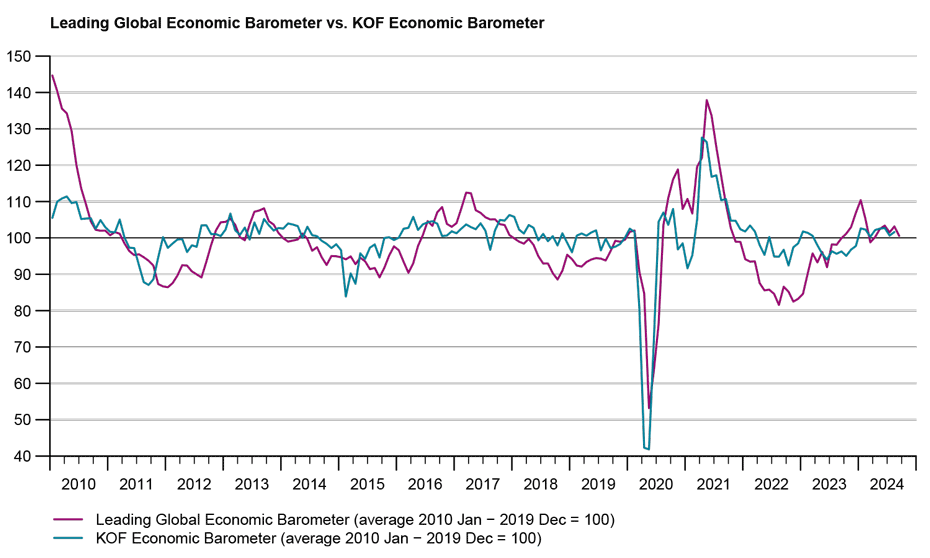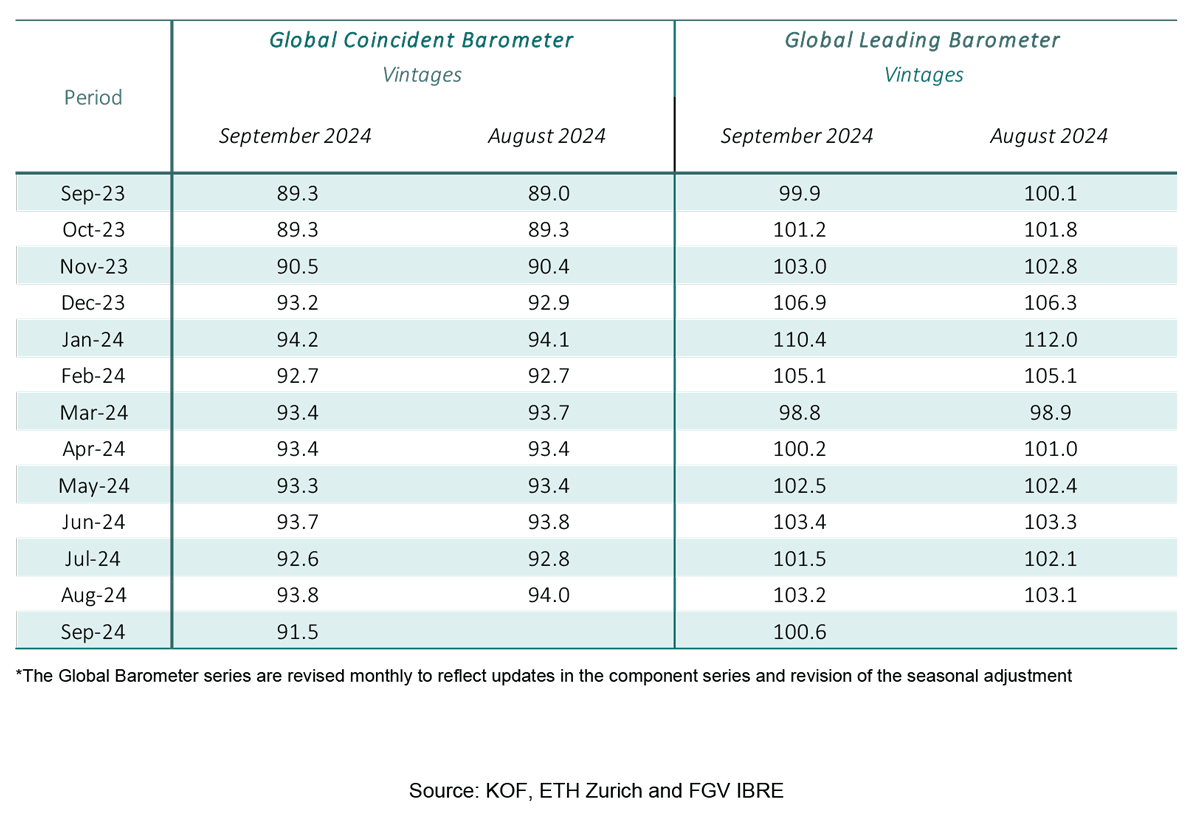Global Barometers declining this month
The Global Barometers record a decline, but overall they are still in line with the tendency towards relative stability observed over the course of this year. The decline brings the Leading Barometer closer to the neutral level of 100 points, while the Coincident Barometer is moving away from this band.
The Coincident Global Economic Barometer decreases 2.3 points in September, to 91.5 points, its lowest level since November 2023 (90.5 pts), while the Leading Barometer loses 2.6 points, to reach 100.6 points. The fall in the Coincident Barometer was entirely driven by the result of the Asia, Pacific & Africa region, whereas the result of the Leading Barometer was driven by the three surveyed regions.
“Although both global indicators show a decline this month, it can still be said that both have generally been relatively flat for more than a year. The leading indicator remains in much better shape than the coincident indicator, suggesting that hopes for an improvement in the subdued situation remain alive. Only the Asia-Pacific and Africa regions continue to deteriorate slowly, while Europe and the Western Hemisphere largely offset this development”, evaluates Jan-Egbert Sturm, Director of KOF Swiss Economic Institute.

“Although both global indicators show a decline this month, it can still be said that both have generally been relatively flat for more than a year”Jan-Egbert Sturm, Director of KOF Swiss Economic Institute
Coincident Barometer – regions and sectors
The fall in the Coincident Barometer in September is the result of the 2.5-point negative contribution of the Asia, Pacific & Africa region, while the contributions from Europe and the Western Hemisphere were barely noticeably positive with 0.1 points each. With this result, the indicator for the Asia, Pacific & Africa region moves further away from the other regions and reinforces the slowdown in the region in 2024. While the Asia, Pacific & Africa region records accumulated losses of 6.0 points for the year, Europe and the Western Hemisphere accumulate gains of 6.4 and 4.5 points, respectively.
The development of the Coincident sector indicators in September is varied, with some sectors showing positive results and others negative tendencies. Industry, Economy (aggregated business and consumer evaluations), and Construction decrease this month, while Services and Trade move in the opposite direction.
Leading Barometer – regions and sectors
The Leading Global Barometer leads the world economic growth rate cycle by three to six months on average. In September, all the regions contribute negatively to the aggregate result with -1.0, -0.9, and -0.7 points for the Western Hemisphere, the Asia, Pacific & Africa region, and Europe, respectively. The lukewarm result since the second quarter of the year is spread across the three regions, and its continuity also signals weak growth in world economic activity for the second semester of 2024.
In September, all the Leading sector indicators decrease, with the exception of Trade, which gains 2.9 points and remains at the highest level among the sectors.
The Global Economic Barometers
The Global Economic Barometers are a system of indicators enabling timely analysis of global economic development. They represent a collaboration between the KOF Swiss Economic Institute of the ETH Zurich in Switzerland and Fundação Getulio Vargas (FGV), based in Rio de Janeiro, Brazil. The system consists of two composite indicators, the Coincident Barometer and the Leading Barometer. The Coincident Barometer reflects the current state of economic activity, while the Leading Barometer provides a cyclical signal roughly six months ahead of current economic developments.
The two Barometers comprise the results of economic tendency surveys conducted in more than 50 countries with the aim of achieving the broadest possible global coverage. The advantages of economic tendency surveys are that their results are usually readily available and are not substantially revised after first publication.
The Coincident Barometer includes more than 1,000 different time series, while the Leading Barometer consists of over 600 time series. Cross-correlation analysis is used to decide which individual time series are included in the barometers. This involves correlating the individual time series with a reference series. The reference series used is the year-on-year growth rate of global gross domestic product (GDP), where the individual national GDPs are aggregated at purchasing power parity to form global GDP. A time series is only included in a Barometer if it shows a sufficiently high correlation and a suitable synchronization or lead with the reference series. The time period used for this correlation analysis currently runs from January 2010 to December 2019.
The series of the two Barometers are revised each month at publication and are standardized to have a mean of 100 and a standard deviation of 10 for the 10-year period previous to the most recent observations.
The methodology is described in:
Klaus Abberger, Michael Graff, Aloisio Jr. Campelo, Anna Carolina Lemos Gouveia, Oliver Müller and Jan-Egbert Sturm (2020), The Global Economic Barometers: Composite indicators for the world economy. KOF Working Papers, vol. 471, Zurich: KOF Swiss Economic Institute, ETH Zurich, 2020.
Contact
KOF Konjunkturforschungsstelle
Leonhardstrasse 21
8092
Zürich
Switzerland

